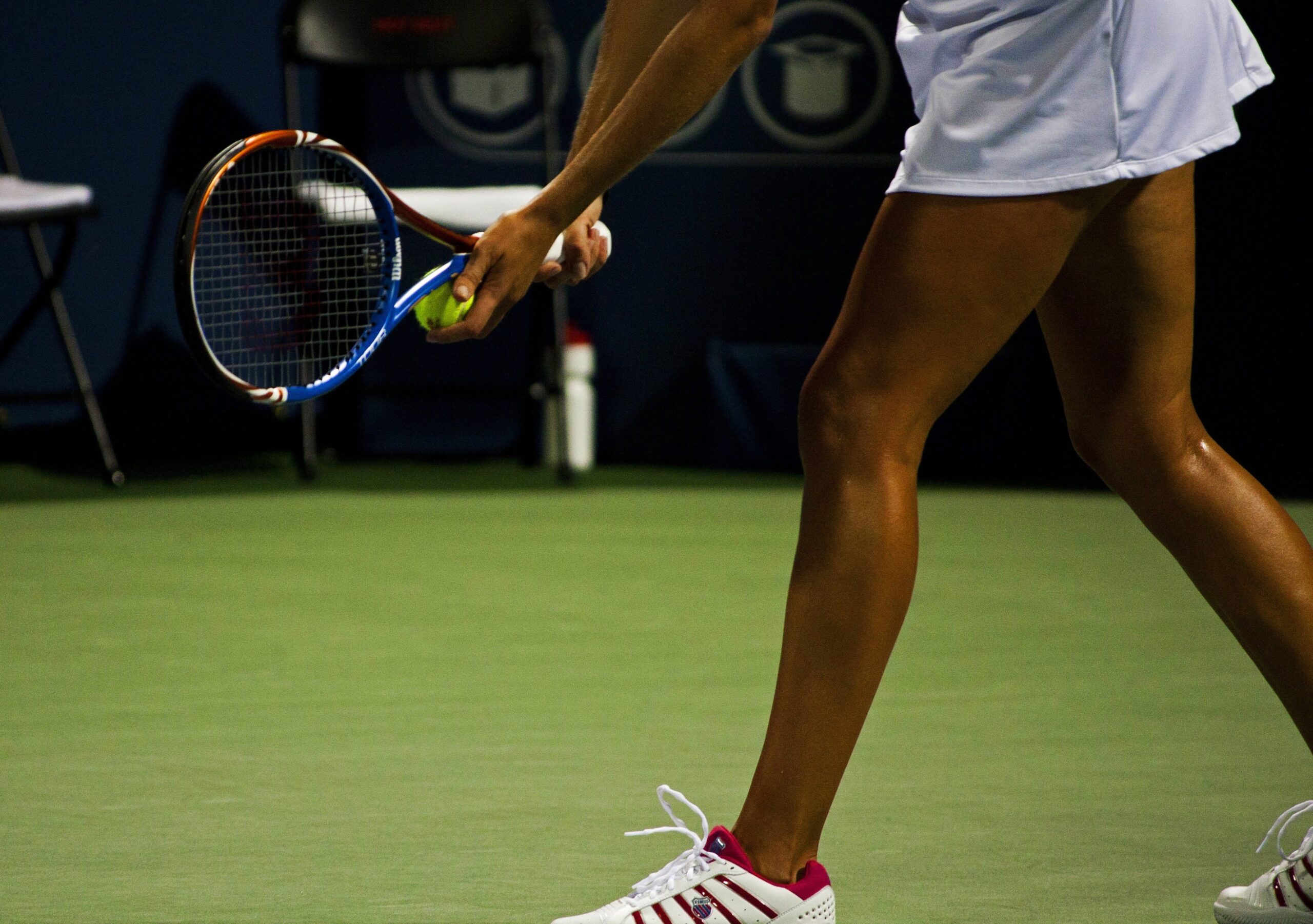The tennis serve, a blend of power, precision, and biomechanics, unfolds in eight critical stages. Each stage embodies a unique challenge and opportunity for mastery. By exploring these stages in detail, we identify common pitfalls and strategies for refinement.
Phase 1. Start
Beyond setting up the physical stance, this phase emphasizes mental readiness and strategic positioning. Issues like misaligned stance can be rectified by focusing on a stable base of support and adopting a near-Continental grip for long-term benefits.
Phase 2. Release
Precision in releasing the ball determines the serve’s trajectory. A common mistake is a straight-on release, which can be corrected by aiming for an optimal release point between the eyes and the top of the head, ensuring the arm extends at approximately a 45-degree angle towards the net post.
Phase 3. Loading
The loading phase is crucial for energy storage. Effective weight distribution and knee bend, particularly with back leg engagement, are essential. A common error is insufficient knee bend, which can be improved by focusing on twisting down and back with the back hip to store energy efficiently.
Phase 4. Cocking
Preparing for energy release, this stage demands correct racket and shoulder positioning. Incorrect racket position, a frequent issue, can be corrected by ensuring the racket tip points down and the shoulder achieves maximum external rotation.
Phase 5. Acceleration
The explosive phase where energy is transferred up through the body to the racket. Diminished serve speed or accuracy often stems from poor timing or coordination, which can be improved by maintaining side-on alignment and ensuring non-dominant arm involvement to optimize energy transfer.
Phase 6. Contact
Achieving the ideal contact point is pivotal for power and control. Errors in judging the contact point can be addressed by aiming to hit at the highest personal reach, ensuring the racket meets the ball with optimal impact angle for effective serve execution.
Phase 7. Deceleration
Proper deceleration prevents overuse injuries. Commonly overlooked, effective follow-through and conditioning are vital for safely slowing the arm and racket. Techniques include focusing on long-axis rotation and a high elbow finish to ensure smooth deceleration.
Phase 8. Finish
Completes the serve and sets up for the next action. An imbalanced finish, often due to rushed or incomplete follow-through, can be corrected by ensuring a controlled and balanced motion that prepares the server for subsequent plays.
CLICK TO LEARN MORE ABOUT OUR TENNIS TRAINING PROGRAM
Tying It All Together
The serve’s complexity lies in the seamless transition between stages, forming a kinetic chain that maximizes efficiency and power. By addressing each stage’s common issues, players can significantly enhance their serve, turning it into a powerful asset on the court.
The elegance of the serve lies in its complexity and the nuanced interplay of biomechanics at work. By dissecting and understanding each stage, players can transform their serve into a formidable weapon on the court.
In practice, addressing the common issues identified in each stage can lead to significant improvements. Whether it’s refining the toss in the Release stage or ensuring proper deceleration techniques, each adjustment contributes to a more powerful, accurate, and safe serve.

